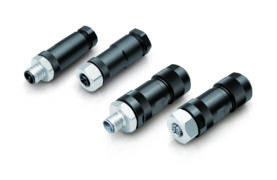Testing Engine Control Units (ECUs), especially safety related models, is as much about software testing as well as hardware these days?this is due to the increased intelligence required within ECUs to control braking, prevent rollovers, and ensure that power is applied to the correct wheels in a compromised driving mode. Automotive manufacturers such as Magna Powertrain, Delphi, and Continental have the same concerns for testing the safe operation of their products.
For this article, we will focus on automotive transfer cases. A transfer case is a mechanical/electronic device that monitors wheel slippage and ensures that power is applied to wheels that are not slipping.
As part of the design process, manufacturers run a series of tests to ensure that the software that controls their transfer cases reacts to system failures, such as open, shorted, and cross/inline resistance connections, in a predictable and safe manner. Ultimately, this improves customer satisfaction and reduces warranty costs.
In one instance, a manufacturer developed a test fixture that allowed them to manually inject faults. While this fixture was effective, having to manually switch in faults was quite time-consuming?this limited the number of tests cases that they could run on a particular unit. Also, a manual fixture often requires more frequent maintenance, further slowing test times. Finally, it was also prone to operator error, which can compromise test results.
That’s what lead them to call on Pickering. These products include Fault Insertion Unit (FIU) switching solutions for Hardware-in-the-Loop (HIL) simulation applications and Programmable Resistors. The FIU switching modules can be used to introduce electrical faults into a system, which typically duplicates various conditions that can occur because of corrosion, short/open circuits, and other electrical failures, inherited through age, damage or even faulty installation.
Using Pickering fault insertion modules to automate the fault injection process, they can run more test cases in a shorter period of time, with the result being that their testing is more repeatable, comprehensive and they can find and fix problems earlier in the development cycle.










